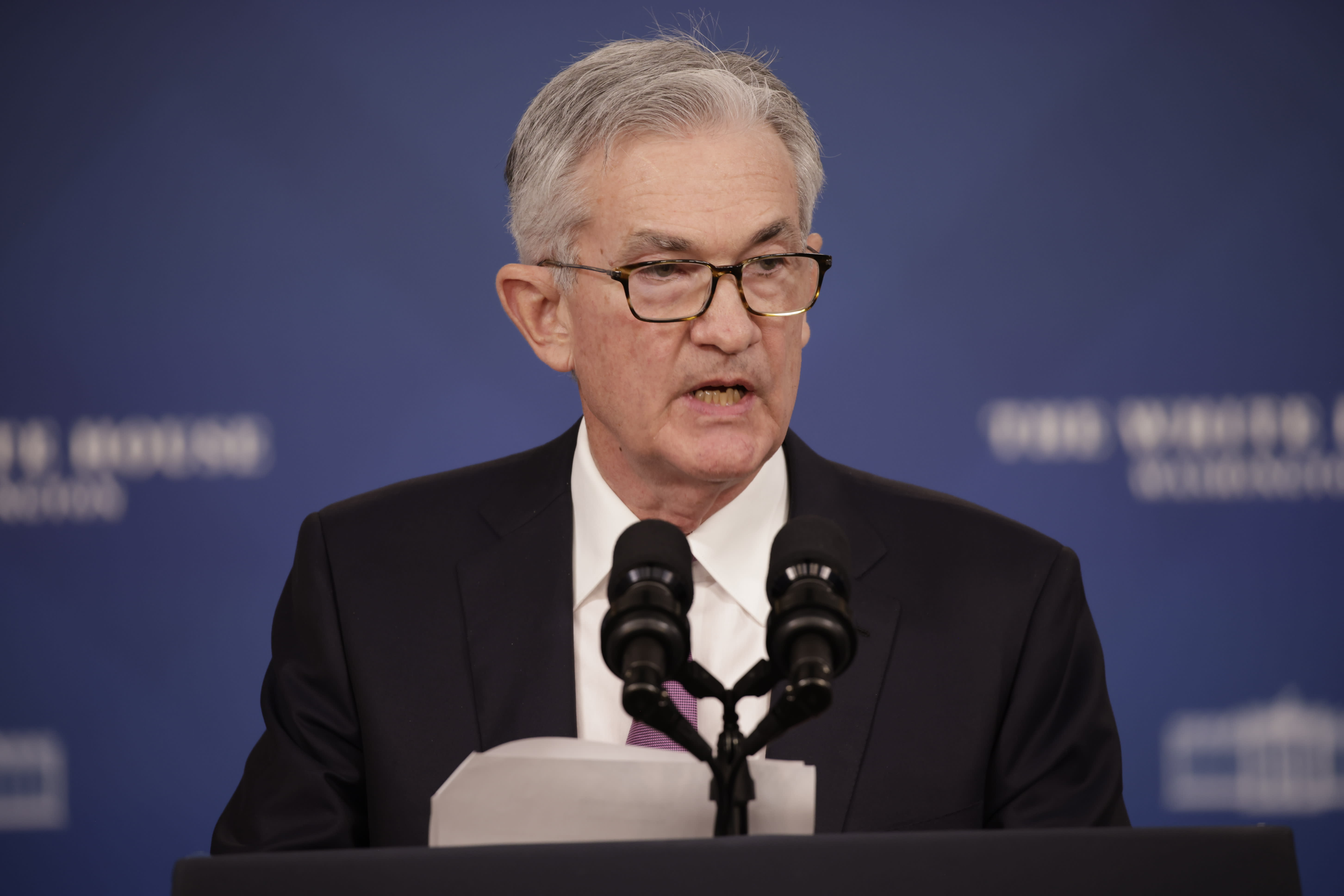If the Federal Reserve meets expectations next week and announces a more aggressive unwind of the measures taken to boost the economy, it will mark an important policy shift for the U.S. central bank and Chairman Jerome Powell.
Again.
The Powell Fed, in fact, has become almost as known for its abrupt changes in direction as it has for the unprecedented levels of stimulus it has provided during the pandemic.
“What the Fed has proven is the difficulty in forecasting by both committee and consensus,” said Joseph LaVorgna, chief economist for the Americas at Natixis and former head of the National Economic Council under former President Donald Trump. “In market parlance, the Fed has bought the high and sold the low. So I do think there will be a credibility issue going forward.”
At its two-day meeting next week, the Fed is expected to say it will double the pace of its bond purchase taper, while also likely hinting at more aggressive interest rate hikes coming in 2022. The moves are coming in response to inflation that is stronger and longer-lasting than Fed officials had anticipated.
But LaVorgna worries that the Fed, after months of calling inflation “transitory,” is now making the mistake of overestimating its duration and tightening at the wrong time. That could necessitate officials again having to change back next year, if the current inflation trend runs out of steam.
A history of pivots
This would be at least the fourth such shift for an institution that prides itself on forecasts and communication, providing what it hopes to be a reliable road map for market participants and the public.
But the whipsaw nature of the U.S. economy has wreaked havoc.
A Fed committed to raising — or “normalizing” — interest rates in 2018 had to change its tune the following year when global weakness came calling. The central bank then closed 2019 with Powell and his colleagues insisting they had cut enough and were confident that rates would hold steady for the foreseeable future.
The pandemic changed all that in 2020, forcing rate cuts and expansive monetary policy that eventually would see the Fed expand its balance sheet by more than $4 trillion.
Later that year, though, the Fed would step in again and announce a paradigm shift in which it would focus more of its efforts on jobs and be willing to tolerate higher inflation. The Fed pledged it would keep policy easy until it had made “substantial further progress” toward employment that was not only full but also inclusive across gender, race and income.
It’s that last move that brings the Fed to its current crossroads: With price increases running at more than 30-year highs, the Fed is now expected to resume its role as an inflation fighter.
Where once market participants talked about the “Powell Put,” or the Fed’s willingness to put a policy floor under market drops, the new conversation could be about the “Powell Pivot.”
But with policy so unpredictable and forecasts often proving unreliable, the Fed could be facing a substantial credibility challenge as it shifts gears once more.
‘The world is shifting’
“This has eerie similarities to December 2018 in the sense that the Fed is saying one thing and the markets are saying another,” LaVorgna said, referring to the Fed’s last rate-hiking cycle that ended with the worst-ever Christmas Eve sell-off on Wall Street.
Indeed, for all the talk of rate hikes looming next spring after the Fed winds down its monthly bond-buying program, Treasury yields have held remarkably steady. The bond market has also taken down its 5- and 10-year inflation expectations, albeit from historical highs in mid-November.
However, traders have pulled forward the timing of those hikes, expecting two — and maybe three —quarter-percentage-point increases in 2022.
More broadly, stocks stumbled through November — mostly on pandemic fears — but the Fed’s policy churns don’t seem to be bother too many investors.
“I think it adds to their credibility. The world is shifting underneath them,” Moody’s Analytics chief economist Mark Zandi said. “The Fed is doing exactly what it has to do. It’s trying to thread the needle.”
Powell has been able to forge consensus on moving more quickly to wind down the extremely accommodative monetary policy stance of the pandemic era. Last week, he engaged in a sense of economic diplomacy by saying it was time to retire “transitory” to describe inflation.
Even some of the more dovish Fed members, or those in favor of easier policy, have conceded that it’s time to tap the brakes.
San Francisco Fed President Mary Daly went from saying in mid-November that “the best policy is recognizing the need to wait,” to noting last week that tapering asset purchases is “certainly something that I would anticipate that we could see” as well as raising rates sooner than the Fed consensus indicated in September.
“The pandemic has just completely upended and scrambled everything over and over again,” Zandi said. “It would be shocking if investors didn’t have a higher level of uncertainty at this point given all that is going on. Investors seem to be of one mind, which is to buy.”
In fact, Zandi said a little less clarity about policy might not be such a bad thing, in light of how high stock market valuations are.
Where Alan Greenspan’s Fed always kept the markets guessing about what it was doing, the Powell Fed has been ultra-transparent, seeking to telegraph all its moves that usually are geared toward supporting financial conditions, no matter how frothy.
“If I had a criticism, I think they’re a little too focused on what investors think,” Zandi said. “They’re following. I think they’ve got to lead a little bit more.”
